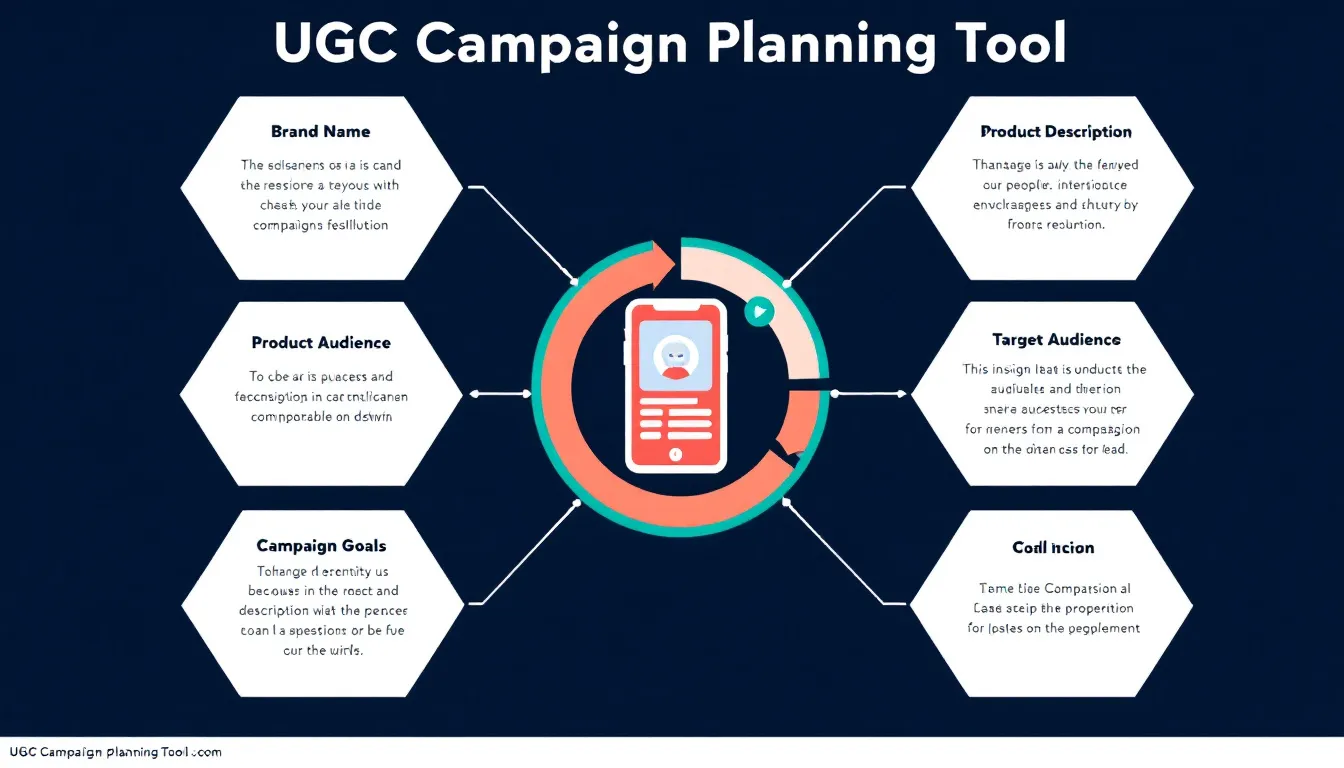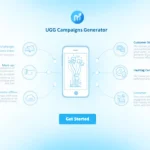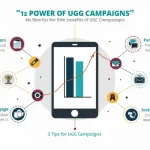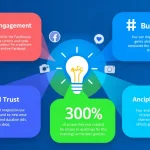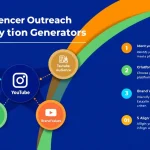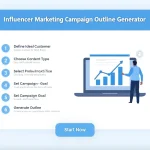Is this tool helpful?
How to Use the UGC Campaign Planning Tool Effectively
To maximize the effectiveness of the UGC Campaign Planning Tool, follow these step-by-step instructions for each input field:
1. Brand/Product Name
Enter your complete brand or product name. For example:
- “Sustainable Earth Cosmetics”
- “Mountain Peak Adventure Gear”
2. Product Description
Provide detailed information about your product or service, including key features and unique selling points:
- “Organic, cruelty-free skincare line featuring locally-sourced ingredients and eco-friendly packaging”
- “Professional-grade outdoor equipment specializing in lightweight camping and hiking gear”
3. Target Audience Demographics
Specify your target audience characteristics:
- “Environmentally conscious women, 25-45, urban professionals interested in clean beauty”
- “Outdoor enthusiasts and adventure travelers, 20-40, middle to high income”
4. Campaign Goals
Define clear, measurable objectives:
- “Increase Instagram engagement by 50% and generate 1000+ pieces of authentic user content”
- “Build brand trust through customer testimonials and achieve 25% growth in online sales”
5. Influencer Guidelines
Outline content requirements and brand standards:
- “Content must highlight natural ingredients and sustainable practices”
- “Showcase product durability in real outdoor conditions”
6. Preferred Content Types
Specify desired content formats:
- “Instagram Stories, YouTube reviews, and Pinterest pins”
- “Long-form YouTube reviews and Instagram Reels”
Understanding the UGC Campaign Planning Tool
The UGC Campaign Planning Tool is a comprehensive solution designed to help brands and marketers develop strategic, data-driven user-generated content campaigns through influencer partnerships. This tool transforms basic campaign inputs into detailed, actionable plans that maximize engagement and achieve marketing objectives.
Key Components of the Tool
- Brand identity integration
- Audience targeting parameters
- Goal-setting framework
- Content guidelines generator
- Platform-specific strategy recommendations
Benefits of Using the UGC Campaign Planning Tool
1. Strategic Alignment
The tool ensures perfect alignment between brand objectives and campaign execution by:
- Creating consistent messaging across all UGC content
- Maintaining brand voice throughout influencer collaborations
- Developing cohesive content guidelines
2. Time and Resource Optimization
Streamline your campaign planning process through:
- Automated strategy generation
- Ready-to-use content guidelines
- Platform-specific recommendations
3. Enhanced Campaign Performance
Improve your campaign results with:
- Data-driven content recommendations
- Targeted audience engagement strategies
- Optimized content distribution plans
Problem-Solving Capabilities
Challenge 1: Content Inconsistency
The tool addresses content inconsistency by generating detailed guidelines that ensure all UGC aligns with brand standards while maintaining authenticity.
Challenge 2: Audience Misalignment
By analyzing target audience data, the tool creates strategies that resonate with specific demographic segments and their content preferences.
Challenge 3: Campaign Measurement
The tool helps establish clear, measurable goals and KPIs for tracking campaign success and ROI.
Practical Applications and Use Cases
Case Study 1: Beauty Brand Campaign
A skincare brand used the tool to plan a UGC campaign that generated:
- 2,500+ authentic customer reviews
- 150% increase in social media engagement
- 35% growth in online sales
Case Study 2: Travel Equipment Launch
An outdoor gear company leveraged the tool to:
- Coordinate 50+ influencer partnerships
- Create 200+ pieces of authentic UGC
- Achieve 80% increase in brand awareness
Frequently Asked Questions
What types of businesses can benefit from this tool?
Any business looking to leverage user-generated content can benefit, including:
- E-commerce brands
- Service providers
- B2B companies
- Non-profit organizations
How detailed should my product description be?
Include key features, benefits, and unique selling points that differentiate your product. The more detailed your description, the more targeted your campaign strategy will be.
Can I use the tool for multiple campaigns?
Yes, the tool can be used to plan multiple campaigns with different objectives, target audiences, and content requirements.
How should I define my campaign goals?
Focus on specific, measurable objectives such as:
- Engagement metrics (likes, comments, shares)
- Content generation targets
- Sales or conversion goals
- Brand awareness metrics
What makes for effective influencer guidelines?
Strong guidelines should include:
- Clear content requirements
- Brand voice and tone specifications
- Product positioning instructions
- Do’s and don’ts for content creation
How can I optimize my campaign for different social media platforms?
Consider platform-specific requirements such as:
- Content format preferences
- Audience behavior patterns
- Platform-specific features and tools
- Optimal posting times and frequencies
What metrics should I track for campaign success?
Key metrics to monitor include:
- Engagement rates
- Content generation volume
- Conversion rates
- Brand mention frequency
- Audience growth
Important Disclaimer
The calculations, results, and content provided by our tools are not guaranteed to be accurate, complete, or reliable. Users are responsible for verifying and interpreting the results. Our content and tools may contain errors, biases, or inconsistencies. We reserve the right to save inputs and outputs from our tools for the purposes of error debugging, bias identification, and performance improvement. External companies providing AI models used in our tools may also save and process data in accordance with their own policies. By using our tools, you consent to this data collection and processing. We reserve the right to limit the usage of our tools based on current usability factors. By using our tools, you acknowledge that you have read, understood, and agreed to this disclaimer. You accept the inherent risks and limitations associated with the use of our tools and services.
